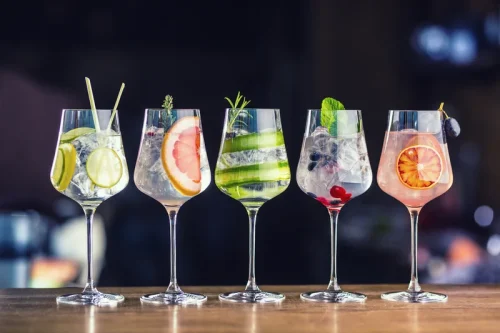This narrative review considers the need for increased research attention on nonabstinence psychosocial treatment of SUD – especially drug use disorders – as a potential way to engage and retain more people in treatment, to engage people in treatment earlier, and to improve treatment effectiveness. Despite significant empirical support for nonabstinence alcohol interventions, there is a clear gap in research examining nonabstinence psychosocial treatment for drug use disorders. Future research must test the effectiveness of nonabstinence treatments for drug use and address barriers to implementation. However, it is clear that COVID-19 presents an opportunity for researchers and policy-makers to pivot their attention to under-researched areas including home-drinking and the role of alcohol in online social interactions. Health consequences of increased home drinking are clearly relevant from a policy perspective as consumption in domestic spaces is generally affordable, unregulated and takes place outside of the constraints present in licensed venues.
Initial insights into ‘Lockdown’ drinking
Because he is a member of a support group that stresses the importance of anonymity at the public level, he does not use his photograph or his real name on this website. Whether you carry a physical card in your wallet or use your smartphone, track your drinks to get a alcohol abstinence vs moderation better handle on your consumption. Similarly, make sure your drinks are standard sizes (12 ounces of regular beer, 5 ounces of wine, or 1.5 ounces of distilled spirits). This is easier to do at home, but you can try communicating your needs to the bartender or waiter.

Support links
Some people find it’s still too overwhelming to be around alcohol, and it’s too hard to change their habits. If one drink still leads to several more, attempting moderation isn’t the safest choice. People who have a more severe drinking problem and find moderation difficult to maintain often do better with abstinence. Measuring the health impact by mortality alone fails to capture the impact that alcohol use disorders have on an individual’s well-being. The ‘disease burden’ – measured in Disability-Adjusted Life Years (DALYs) – considers mortality and years lived with disability or health burden.

Levels of Care in Drug and Alcohol Rehab Programs
- On the other hand, Kriss described home-based drinking occasions where he would drink more, earlier, and less predictably, than would have been conceivable pre-lockdown.
- It’s also important to know that you can change certain circumstances, and therapy can aid in helping you set boundaries that empower your progress.
- Some clinicians and researchers posit that the field’s current emphasis on abstinence-based recovery may fail to engage many individuals with SUD because of perceptions that a goal of abstinence is required to engage with care.
- They not only had a greater reduction in drinking days per week (about 3 days per week by the end of the treatment period).
Turning to the findings emerging from our own data, we observed that whilst some participants were drinking more during lockdown and / or drinking heavily at home, others were engaging in what might be defined as light-moderate consumption patterns at home, and some had seen a decrease in their consumption levels. Many of our participants reported that their drinking practices had not really changed significantly during lockdown, as they were primarily home drinkers and had largely maintained these drinking habits during this period. They were continuing this pattern even as licensed venues started to re-open in the UK, and had not yet returned to drinking socially outside the home. Study authors used data from their prior randomized trial that tested two motivational interventions and one comparison condition where individuals were simply encouraged to reduce their drinking taking place over 7 weeks. In order to be included in that original study, an individual had to be diagnosed with an alcohol use disorder, report a minimum average weekly drinking of 16+ drinks for women and 25+ for men, and express interest in a moderation approach to changing their drinking.
The Two Approaches
There are a number of specialist alcohol services that provide help and support for the relatives and friends of people with a dependence on alcohol. Cognitive behavioural therapy (CBT) is a talking therapy that uses a problem-solving approach to alcohol dependence. The difference is you work through the stages on a one-to-one basis with a counsellor, rather than in a group. Nalmefene (brand name Selincro) may be used to prevent a relapse or limit the amount of alcohol someone drinks. Naltrexone can be used to prevent a relapse or limit the amount of alcohol someone drinks.
- Ultimately, nonabstinence treatments may overlap significantly with abstinence-focused treatment models.
- There are no requirements for changing your relationship with alcohol and seeking treatment.
- To evaluate this question, it’s important to recognize that alcohol use disorder (AUD) is diagnosed on a spectrum, and can be addressed in different ways depending on the individual.
- Stephen, 42, described how alcohol represented a kind of leveller that created a sense of consistency and normality in a context that was uncertain and anxious.
- He adopted the language and framework of harm reduction in his own research, and in 1998 published a seminal book on harm reduction strategies for a range of substances and behaviors (Marlatt, 1998).
Consider the health benefits

Her counselor agreed that limiting her drinking could be a good solution and they set a goal for Sara to cut back her consumption to these special occasions only. This word “abstinence” can be an intimidating word to many, especially those in the early stages of recovery. Your whole body may convulse saying, “I’ll do anything, just don’t ask me or tell me that I have to stop forever.” This is normal.
Alcohol as a risk factor for mortality

Lastly, you can join moderated alcohol support groups to get encouragement and gain accountability in a non-judgmental and secure forum. For example, the moderation guideline for women is one standard drink or https://ecosoberhouse.com/ fewer in one day, but a generous drink we might order at the bar can easily amount to two or three standard drinks. The main argument against moderate drinking is that any amount of alcohol can be harmful.

